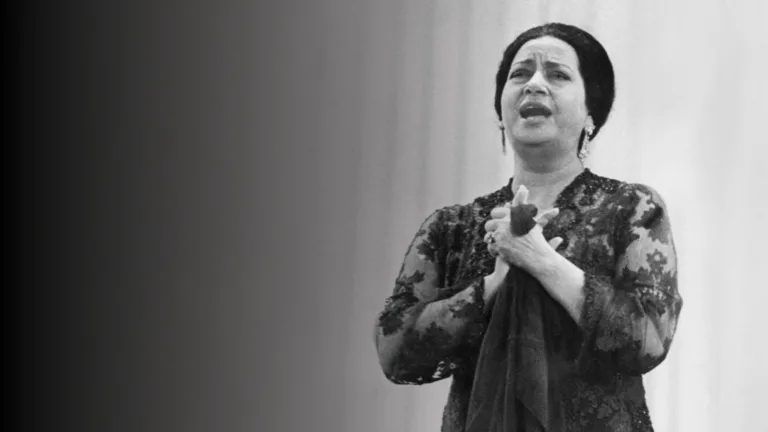Handloom fabric is the pulse of India, and has been a tradition in our land since millennia. India is one of the few countries where handloom and hand-spinning are still thriving. In his recent ‘Mann ki Baat’ address to the nation, Indian Prime Minister Narendra Modi spoke about National Handloom Day (celebrated on August 7) and encouraged citizens to support handloom artisans, which, in turn, would add to the vision of “Vocal for Local”.
From khadi, which has its roots in our movement for Independence, when Mahatma Gandhi encouraged Indians to start spinning yarn with a charkha (spinning wheel) at home, to clusters of weavers spread all over India who spin and weave indigenous cloth – whether it’s ikat, bandhni, patola, Banarasi brocades, zari, Apatani, or pashmina – cloth made on the hand-operated loom is woven within the fabric of our nation. Handloom fabrics like khadi were omnipresent right until the advent of the power loom in the West in the 18th century, which ensured that our markets were flooded with machine-made cloth, and led to a decline in our own industry. But thanks to government initiatives like World Handloom Day and many others, we are now aware of the significance of various types of handlooms available in India, as designers and customers pay homage to the artisanal work in each outfit, saree, or cloth purchased.
Khadi
Khadi, the most humble yet potent symbol of India’s freedom struggle, needs to be certified by the Khadi Village Industries Commission (KVIC), for it to be able to carry the name – and the cloth must be hand-spun and handwoven. The fabric is mostly woven in KVIC-recognised and supported institutions where the government provides employment to rural weavers. These institutions are scattered all over India, in Bengal, in Uttar Pradesh, Madhya Pradesh – and the cloth can be bought from Khadi Gram Udyog outlets all over India. Nowadays designers are experimenting with khadi – from stalwarts like Rajesh Pratap Singh, who has been creating clothes from khadi for over a decade, to younger labels like Anavila that experiment with bright hues and jewel tones by procuring khadi woven in Bengal, and dyed with natural dyes like turmeric and indigo.
Ikat
Ikat is a truly mysterious weave, with an Egyptian mummy discovered with a piece of Odisha ikat – a proof of the trade routes between the two ancient civilisations. References to ikat have been found in the murals of the Ajanta caves from 200 BC. Ikat, unlike other forms of tie-and-dye, is unique because here it’s the yarn that is first dyed (by mashing together bundles of yarn tied tightly together, dyed in the pattern of your choice), and then the weaver takes the yarn, and lines it up on the loom to create a pattern on it – a very laborious and intricate process. There is warp ikat, weft ikat, and double ikat, which is very intricate, and it’s manufactured in Odisha, Gujarat and Andhra Pradesh.
Veteran designers like Madhu Jain, have made ikat their métier by creating museum-worthy pieces in bamboo silk in the ikat styles of Indonesia, Uzbekistan, and India. Jain has been vocal in her support of sustainable fabrics and living, and this new textile does not eat into the earth’s resources, and can provide livelihood to bamboo growers, besides being biodegradable.
Inspired from the land of Babur, Uzbekistan, where it was a royal textile – master artisans like Asif Shaikh (founder of the CDS Art Foundation), awestruck by its large, bold pattern (the ikat in India has smaller motifs), has superimposed his version of ikat with miniaturised motifs that have been hand embroidered on the fabric.
One of the richest ikat weaves in India – that was once worn by royals and aristocrats – comes from the state of Gujarat – the Patola. Known for its vivid colours, and geometric designs interspersed with folk motifs, it’s said that a Patola sari can survive for 300 years and still retain its original colour! A Paan Patola is a double ikat weave from the northern Gujarat region of Patan, and is a priceless heirloom that are passed down from one generation to the next. Each piece of coloured (dyed) yarn is carefully aligned so as to form the desired pattern while weaving, and both the warp and weft are dyed whilst making this kind of Patola. Natural dye like madder roots, indigo, and turmeric are used to colour the thread, and patterns look identical on both sides. Delhi-based fashion label Asha Gautam recently created a phenomenal Patola sari for actor Urvashi Rautela, which took six months to make – with more than 70 days to colour the threads, and 25 days to weave, and with 600 gm of silk.

A group of weavers make Sambalpuri ikat fabric in Bargarh, Odisha. Odisha’s rich weaving tradition includes the tribal Bomkai and the striped or chequered Santhali sarees, but the weft-resist Sambalpuri, woven in silk or cotton, is its most recognisable product.
Banarasi Brocade
The Pilikothi area of Varanasi is the centre of the world-famous Banarasi brocade, which involves intricate motifs in zari handwoven onto silk cloth, producing some of the finest sarees, typically worn by a bride on her wedding day. Kolkata-based designers and textile revivalists Swati and Sunaina are known for their delicately woven tissue saris with one side silk, and the other side pure zari, with borders in Hashiya miniature paintings in brocade. Each saree takes around eight months to weave and costs around INR 2 lakh. The ornate Gyaser weave (traditionally made for the heavy robes of Buddhist monks in monasteries in Tibet and Lhasa) was brought to Varanasi from China by traders. This Oriental influence can also been seen in today’s Banarasi sarees.
Shanti Banares, based in Varanasi, is a third-generation textile brand specialising in Banarasi weaves, and is led by Amrit and Priyanka Shah. In one of their recent collections, they have used Persian weaves to create bird motifs – unusual in Banarasi saris, using antique-finish zari. “To make a loom, the weaver normally makes a jacquard (a pattern that is woven in a certain ratio of under and over threads) that comes on the loom,” says Amrit Shah. “But when there is no jacquard, the weaver takes a motif and weaves on it like a drawing – a technique known as uchyant, where each motif is woven separately.” Some of their most intricate sarees are woven with jamdani (a technique that uses the lightest yarn or zari to weave motifs separately onto the silk). Another forte of theirs is the jangla jaal, which is a Banarasi brocade pattern of delicate vines woven with zari into a pure silk saree. A saree like this needs around four to eight weavers and can take from two to four months to be ready.

A Contemporary Banarasi weave
Apatani Weave
This weave is prevalent in every home of the Apatani community in Arunachal Pradesh (and parts of Nagaland) even today, although unfortunately, the number of families practising it has been declining. With its colourful geometric, zig-zag patterns, normally using the colours black, red, white, and yellow, the minimalist patterns are used to create aesthetic shawls and other fabrics on a bamboo tube set. With many youngsters turning away from the loom, it’s time to bring back their interest by creating a market for these wonderful textiles, in the forms of shawls, throws, and even jackets.
Pashmina
Next we travel to the picturesque, wintry setting of Kashmir, which produces the warm and comforting pashmina weave. A 100 per cent pashmina must be made from 100 per cent cashmere to be considered premium, and only gets the GI (Geographical Indication) certification if it’s handspun and handwoven using pure pashmina wool from Ladakh. “The wool for the pashmina we make is from goats from the Chand Khand region of Ladakh,” says Tariq Ahmad Dar, a former model who runs his own luxury pashmina brand, Pashmkaar. The hand-spinning of the yarn is done by women artisans from Srinagar (it takes one woman one week to make thread from 10 gm of wool), and once it’s woven into a shawl or a stole, it’s dyed or embroidered (a 2-m shawl takes 15 days to embroider). Dar employs 250 artisans (including 40 women just to spin the yarn), and is using fresh, bright colours to make pashmina stoles for men as a fashion accessory using his international travels and inspirations to make fashionable pieces for modern men. Some of the pieces for women in his Shah Bano line have taken around three years to embroider, and prices can go up from INR 12,500 all the way to INR 1 lakh. When you design and weave a beautiful pattern directly onto the pashmina, this is known as kani – woven with small, eyeless wooden sticks – which is the most prized pashmina of all, and gets its own GI, and features stunning Mughal motifs (mostly flowers) in a very labour-intensive, almost spiritual process (only 3-4 cm can be made in a day). “The pashmina was the first economic revolution in Kashmir, especially for women,” says Dar, adding, “My grandmother would spin yarn on a charkha, and even today the yarn cannot be made without women.”
The above are just a few of the handloom textile traditions practised in India. But there are many more that are flourishing in different parts of the country. With support from the government, designers and textile revivalists are working towards popularising these fabrics again. Promotion of the ‘India Handloom Brand’, cultural diplomatic engagements and the support of indigenous artworks are some of the important steps being taken toward promoting this industry.
Also effective are implementation of government schemes such as the “Make in India” and “Vocal for Local” to promote handlooms and crafts; the Mudra scheme to support women entrepreneurs, the National Rural Livelihoods Mission, and mobilising SHGs are other bottom-up approaches. But what is most important, is the support people can offer in the revival of these weaves by buying and wearing them.
Read Also: India the Spice Bowl of the World















